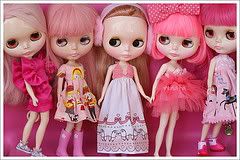Χρωματική εννοιολογία (Δ) – Semantic of colors (D)
Χρωματική εννοιολογία (Δ)
Αναφερθήκαμε σε προηγούμενο post στην έρευνα των Berlin και Kay και τα αποτελέσματά της
Οι κανόνες που εξήχθησαν από την έρευνα, υπαινίσσονται πως όλες οι γλώσσες, καίτοι διάφορες μεταξύ τους, σχηματίζουν χρωματικούς όρους σε τακτή χρονολογική διάταξη, η οποία δείχνει την εννοιολογικά χρωματική εξέλιξη κάθε γλώσσας.
Η σειρά αυτή, όπως εξάγεται από τους κανόνες, είναι η εξής:
1: άσπρο και μαύρο.
2:κόκκινο
3:πράσινο ή κίτρινο
4:κίτρινο ή πράσινο
5:μπλέ
6:καφέ
7:μωβ, πορτοκαλί, γκρι, ροζ.
Το 7ο στάδιο δεν περιλαμβάνει απαραίτητα και τους 4 όρους. Μπορεί να έχει σχηματισθεί η έννοια μόνο ενός από τους χρωματικούς όρους, ή δυο, η τριών. Οι περισσότερες σύγχρονες εξελιγμένες γλώσσες βρίσκονται στη φάση προσπάθειας σχηματισμού της έννοιας των ροζ χρωμάτων και διαχωρισμού της από τη έννοια της μητρικής κόκκινης ομάδας.

Ας δούμε τα πράγματα λίγο καθαρότερα. Η πρώτη έκφραση είναι η χρωματική απόδοση της σχέσης φως-σκοτάδι. Γλώσσες που έχουν αφήσει γραπτό λόγο, επιτρέπουν πεντακάθαρα να πιστοποιήσουμε αυτή τη σχέση όπου το λευκό αλλού αναφέρεται και σαν φωτεινό και το μαύρο σαν σκοτεινό. Αυτό συμβαίνει σε όλες τις γλώσσες εκτός από τα κινέζικα όπου, κατά τους ερευνητές, οι όροι άσπρο-μαύρο αντιστοιχούν στην αντίθεση ρηχό-βαθύ.

Το πρώτο που εμφανίζεται καθαρά σαν χρωματική έννοια, είναι το κόκκινο. Το χρώμα αυτό, χαρακτηριστικό του ανθρώπινου χυλού, του αίματος, σχετίζεται με την ίδια τη ζωή, αλλά και οι ιδιότητές του είναι τέτοιες που το κάνουν να ξεχωρίζει από τα άλλα και να γίνεται εύκολα αντιληπτό. Παρ’ ότι η διάκριση του κόκκινου είναι ξεκάθαρη, υπήρχε θεώρηση (Αριστοτέλης, περί χρωμάτων), επομένως και σύγχυση, πως είναι ένα και το αυτό χρώμα με το κίτρινο, το οποίο εθεωρείτο σαν διαβάθμιση του κόκκινου.

Αφού ξεκαθαρίσει η έννοια του κόκκινου, γίνεται μεγάλο μπέρδεμα μεταξύ του κίτρινου και του πράσινου, σε πολλές γλώσσες κυρίως λαών που έχουν μεγάλη εξάρτηση από τη βλάστηση, όπου η εναλλαγή του πράσινου από το κίτρινο στα φύλλα των δένδρων και των φυτών είναι συχνή και δυσκολεύει τη διάκριση των δυο χρωμάτων που θεωρούνται σαν ένα, το χρώμα της χλωρίδας.
Βέβαια οι πληθυσμοί άγονων περιοχών δεν έχουν αυτό το πρόβλημα και ο κάτοικος της ερήμου αντιλαμβάνεται τις κίτρινες (ξανθές) αποχρώσεις πολύ πριν από τις πράσινες. Ανάλογα λοιπόν με τις συνθήκες διαβίωσης εμφανίζεται εννοιολογικά πρώτο ένα από τα δυο αυτά χρώματα ενώ το άλλο έπεται στη σειρά.
Εάν το πράσινο είναι το τελευταίο που εμφανίζεται, συγχέεται με το μπλε, όπως συγχέονται οι γαλαζοπράσινες αποχρώσεις της θάλασσας.
Translation into English
Semantic of colors (D)
We have already mentioned in a previous post the research of Berlin and Kay and their effects
Rules drawn from research suggest that all languages, although different, in terms of color form a regular chronological order, showing the conceptual development of colors in each language.
This series, as derived from the rules is as follows:
1: white and black.
2: Red
3: green or yellow
4: yellow or green
5: Blue
6: Brown
7: purple, orange, gray, pink.
The seventh stage does not necessarily include all 4 conditions. It may have formed the concept of a single color term, or two, or three. Most modern languages are in the advanced stage of efforts to form the concept of pink and its separation from the parent concept of the red team.
Languages that have evolved to the fourth stage (the determination as concepts of green and yellow) and have five basic color concepts, have some confusion in color discrimination, mainly between blue and green (as that blue tends to separate from green). Before the development of a language to a higher stage (referring just on color concepts), there is a confusion between the conditions for development to those already defined.
Let’s have a look a little bit clearer:
The first expression is the idea of color performance of the relation light-dark.
Languages that have left written documents, allow certify clearly this relationship where white elsewhere mentioned as bright and black as dark. This happens in all languages except Chinese, in which, according to the researchers, the terms black and white contrast corresponds to shallow-deep.
The first one that appears as a pure color sense is red. That color is characteristic of human pap, blood, which is associated with life itself. Red properties are such as to distinguish this color from the others and make it easily discriminated. Although its distinction is clear, red was confused (Aristotle “about colors”) with yellow and therefore there was a theory that both were different hues of one and the same color, thus yellow was regarded as a status of red.
Having clarified the meaning of red there is a big mess between yellow and green in many languages, especially between people who are highly dependent on vegetation, where the rotation between green and yellow is common and difficult to distinguish, so the two colors are considered as one, the color of vegetation.
Certainly the people in arid areas do not have this problem and the resident of a desert understands the concept of desert yellow (golden) color long before the green. So, depending on living conditions appear conceptually first one of these two colors while the other is next on line.
If green is the last formed concept of color terms, blue is confused with it as are confused the blue – green shades of the sea.
admin is | Topic: εννοιολογία | Tags: αίμα, Αριστοτέλης, άσπρο, γκρι, γλώσσα, εννοιολογία, έρημος, θάλασσα, καφετί, κίτρινο, κόκκινο, μαύρο, μπλε, μωβ, ξανθό, πορτοκαλί, πράσινο, ροζ, σκότος, φως, χλωρίδα





No Comments, Comment or Ping
Reply to “Χρωματική εννοιολογία (Δ) – Semantic of colors (D)”